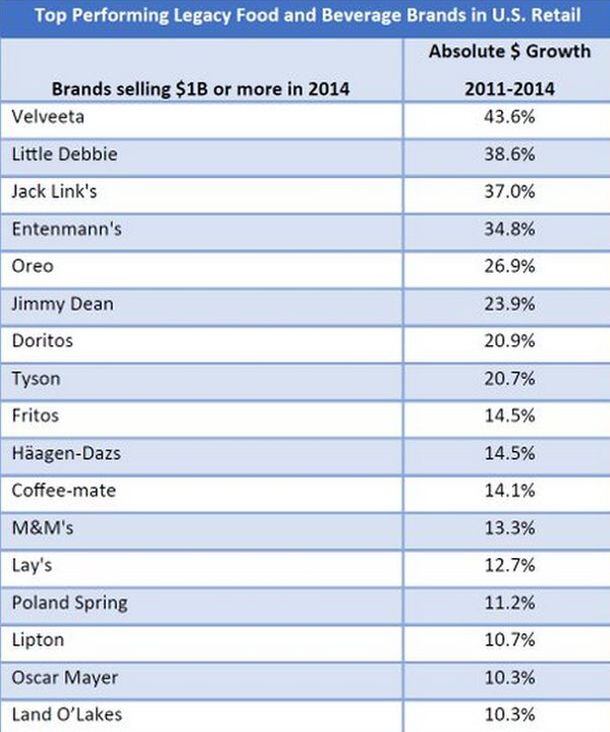So if sheer scale doesn’t make you a ‘power brand’, what does?
In its report ‘Understanding the Power Brand Phenomenon’, Hartman Group develops a new definition of ‘power brands’ that moves beyond size to cover billion-dollar+ brands “whose position in food culture and shrewd management have, together, allowed otherwise dated brands to remain contemporary and to continue to drive profit growth”.
True power brands, says Hartman Group, are brands with conventional channel distribution prior to 1980 (ie. ‘legacy’ brands) with more than $1bn in sales in the past year, that have grown faster than inflation for the past decade AND have outperformed their respective sector growth rates during the past four years by at least 1% (7.2% for packaged food, 6.4% for beverages).
And it concludes: “The reality is that, of roughly 213 legacy brands studied, only 8% [17 brands] can meet our strict power brand criteria.”
So what is distinctive about the brands that made Hartman Group’s power brands list?
Most are “highly focused brands that operate in only 1.9 operating categories on average, the majority selling in the same operating category in which they began”, notes Hartman Group.

Processed center-store convenience meal brands have lost their luster
And which brands didn’t make it?
“Mega-brands that extended into multiple, culturally unrelated categories” did not make the list, it added.
Meanwhile, “processed center-store convenience meal brands” are also noticeably absent, says Hartman Group.
“As Americans liberate themselves from traditional notions of the meal and as snacking overtakes our eating day, many are finding that the most convenient thing to do is simply to snackify the meal. In this cultural environment, the better value proposition of fast casual restaurants is more appealing to today’s consumers’ appetites.”
Meanwhile, only two beverage brands (Poland Spring and Lipton) made the list (iconic brands including Coke, Pepsi and Dr Pepper didn’t).
“The only two that meet our criteria are those that have a noticeable orientation to contemporary notions of health and wellness due to their categories.”
Focus appears to be a requirement of true power brands
So what are the key takeaways?
According to Hartman Group: “The lessons for marketers and brand stewards are loud and clear. Legacy brands that have become so iconic as to weather the growing trends against processed food and beverage are ones that:
1) Are highly focused on one product form, one food
2) Have built an iconic brand reputation around that specific food form. Focus is not sufficient to guarantee long-term growth in a legacy brand, but it appears to be a requirement of true power brands in today’s market.”
Click on the link below for more analysis from Hartman Group:
Disrupt or die: Big Food is at a crossroads, says Hartman Strategy
